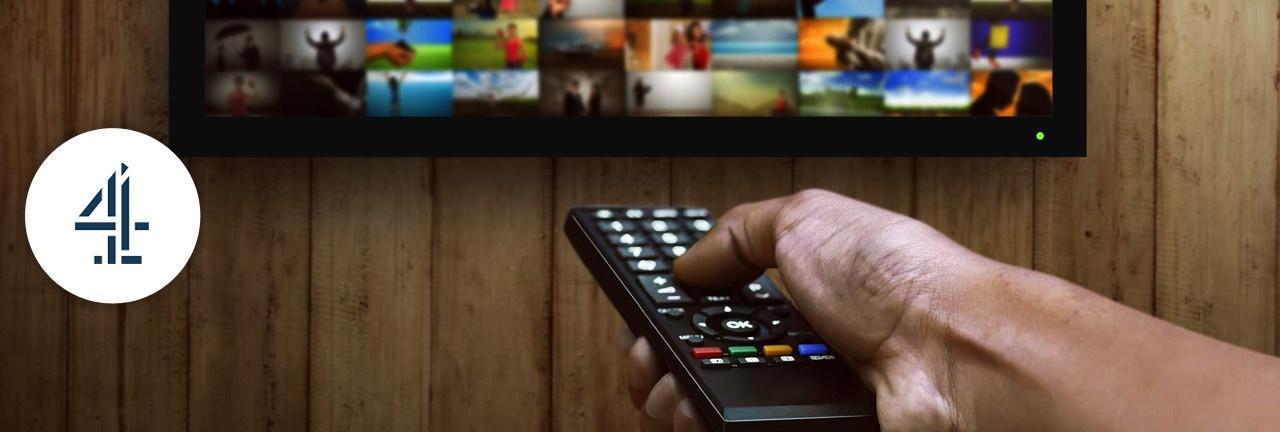Channel 4, deploys resilient quality Network allowing content for multiple platforms to be pushed quickly and efficiently, resulting in operational cost-savings and resource efficiencies.
About Channel 4
Enabling multi-platform content delivery for Channel 4's on-demand platform.
Channel 4 was the first UK broadcaster to launch an on-demand platform in 2006, 4oDTV, which quickly proved to be the most popular commercial TV service on the Internet. Since then, 4oD has continued to grow considerably each year, with 28 million monthly video views and 7.6 million unique users per month able to choose when, where and what content they watch.
Solution
Exponential-e was selected for its Network which offers low latency, low-jitter and no packet loss. The Network was already proven in broadcasting environments with Exponential-e serving other major broadcasters.
As Exponential-e was already supplying a 1Gig fibre circuit to Channel 4, connecting various offices in London, it was a trusted partner. Andrew Bell, Technical Project Manager, Broadcast and Engineering, explained the reasons for selecting Exponential-e:
"We chose Exponential-e, as they have been a partner since May 2006 and their service has been excellent. The technology delivers and their teams ensure we enjoy a good working relationship with more than satisfactory service levels. They already had a quality broadcast network in place, so it seemed a natural choice for the latest deployment"
Exponential-e worked closely with Channel 4 to upgrade the existing Network to a 1Gbps capacity, which is capable of supporting bandwidth hungry content such as encoded video files, metadata, ancillary assets, subtitling data and images on a daily basis. The Network is highly resilient and scalable, backed by 99.99% Service Level Agreements to ensure next to no packet loss occurs; it enables real-time data delivery that is crucial in broadcast environments.
This allows for fast and efficient delivery of media rich content to a newly outsourced production facility at RedBee Media, where the preparation of non-linear content takes place, playout and transmission. Content is then distributed via Exponential-e's multiple point-to-point e-pipes to various partners and content providers, including IOKO, Home Choice, Virgin Media, BT Vision, Inqb8r and On Demand.
The upgrade enabled Channel 4 to eliminate the time-intensive use of tapes and hard drives, where content needed to be transferred to hard drives then shipped to various UK locations by couriers and post. It also no longer needs to host large FTP sites for content distribution.
Rather than relying on an antiquated manual process, we now have a Network in place that supports an automated workflow, dramatically speeding up our processes. We can now deliver a large number of content directly onto the platforms much faster, significantly freeing up internal resources and making operational cost savings" explains Andrew Bell.
Channel 4 is also looking to deploy a fail-safe backup Network in the event of a disaster situation, leveraging Exponential-e's 1GigE Connection and circuit resilience to ensure no disruptions or downtime occurs.
- Channel 4 now has a resilient quality Network in place that can push content to multiple platforms quickly and efficiently, providing operational cost-savings and resource efficiencies. This also enables Channel 4 to meet time-to-market deadlines for service launches and deploy services in a quicker fashion.
- Since the launch, 4oD has forged new paths into content delivery and is now available on multiple platforms, including YouTube, Seesaw, iPads, iPhones, PlayStations and on TV video on demand services.
Challenges
Since its launch, 4oD has continued to grow considerably each year, placing an ever increasing demand on its existing distribution Network. This demand reached a peak when Channel 4 prepared to re-launch its 4oD service to provide viewers with access to all its archives. To prepare for the launch, Channel 4 needed to source a quality broadcast Network provider, capable of distributing all of its non-linear programming on a daily basis. The Network also needed to support a newly automated workflow, where a large number of content would be directly pushed onto various platforms. As a result, Channel 4 began to evaluate possible suppliers.
Solution benefits
- High-speed 1Gbps Network.
- 99.99% Service Level Agreements.
- Fail-over backup Network.
- Broadcast quality, low jitter and no packet loss Network.
We chose Exponential-e, as they have been a partner since May 2006 and the service has been excellent. The technology delivers and their teams ensure we enjoy a good working relationship with more than satisfactory service levels. They already had a quality broadcast Network in place, so it seemed a natural choice for the latest deployment.
Andrew Bell Channel 4
Make it work, make it easy, make it cool
Major media player, Havas, brought in Exponential-e to design and build a highly sophisticated 16 site Wide Area Network.
About Havas
Solution
Exponential-e worked closely with Havas to design a solution that would remove the complexity and duplication from the existing infrastructure and consolidate all 16 sites into a central Network, while ensuring each business unit remained secure from each other. Exponential-e engineers were able to overcome this challenge with a relatively simple Network design.
Single access points - To accommodate Havas' requirements, we deployed a multi-site Virtual Private LAN Service (VPLS) WAN solution using single, converged connections from each of the Havas offices. Each Havas business unit is now supported by our resilient Next Generation Network.
VPLS communities - To consolidate Havas' disparate WANs we needed to discover which agencies needed to be able to talk to each other. Once we had this information, we were able to group agencies into different VPLS pools to create mini-WANs. The fact that we were able to maintain LAN and WAN separacy means the solution is operationally simplistic and it gives Havas maximum control.
Centrally hosted hardware and services - We co-located the firewalls across two separate data centres using VLANs into the firewall. This means Havas can now benefit from centrally hosted firewalls which it has complete control over. Havas are able to change security policies and routing itself from one central point. The company also has centrally hosted Internet connectivity removing considerable complexity, duplication and cost from its wide area Networking.
Resiliency - Our pioneering NGN design in this instance was based on providing resilient and automated failover to secondary circuits at each site, whereby the local router will switch traffic automatically into the secondary circuit in the event of a failure on the primary circuit. In addition, we provided resilient connections to the centralised firewall to achieve automatic failover on the Internet service.
Convergence and separation - We created one unified Network but managed to maintain 100% security and separation for its individual business units. Most importantly Havas is in control and unnecessary cost and duplication have been eliminated.
The IP VPN solutions which we first considered required us to use highly-complex access-control lists. With the solution designed by Exponential-e, you don't have this headache as it's all done via secure Layer 2 broadcast domains.
Tony Farrington Havas.
Challenges
There were a number of issues Havas had with its old Network. Firstly, the IP VPN solutions it was using required highly complex access-control lists on each site's CPE router to keep different business unit traffic secure from each other. This was proving very inflexible, time consuming and an administrative headache.
Havas' Network had also grown to include multiple Internet services which were operated by many of the individual business units. As a result of this, the company was having to manage multiple firewalls and Internet service suppliers which was proving to be an area of concern.
The business wanted to consolidate its Network of disparate Wide Area Networks (WANs) into one unified platform, whilst maintaining security between business unit communities. At the same time it wanted to centralise its Internet provision and security services so the company could eliminate a complex array of providers, bandwidths and underlying technologies.
Solution benefits
- Havas now benefits from centrally hosted firewalls and Internet connectivity removing considerable complexity, duplication and cost from its Wide Area Networking. Furthermore the company is able to change security policies itself from one central point. The pioneering NGN design is based on providing resilient and automated failover to secondary circuits at each site, whereby, the local router and the centralised firewalls automatically take over in the event of any failure on the primary circuit.
- The result is a highly sophisticated sixteen site Wide Area Network. that meets Havas' key requirement for supporting its different UK businesses from a common infrastructure whilst maintaining a high level of control and security between each business unit.



